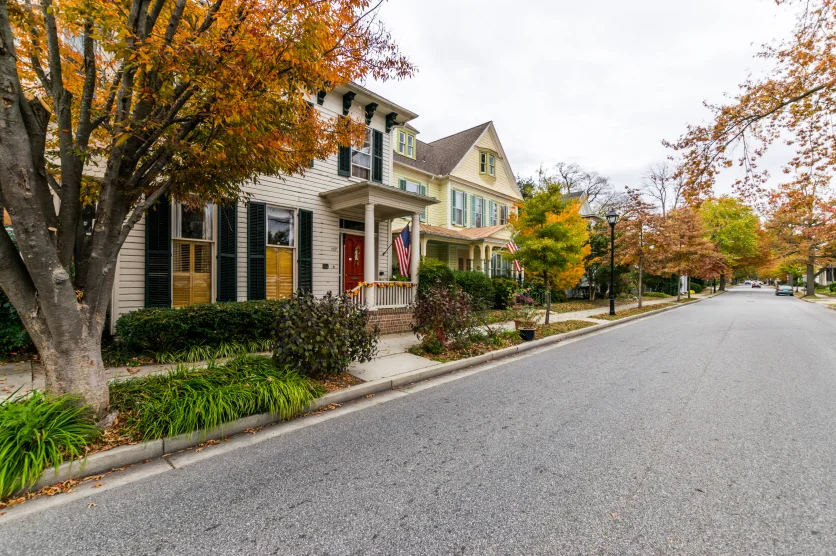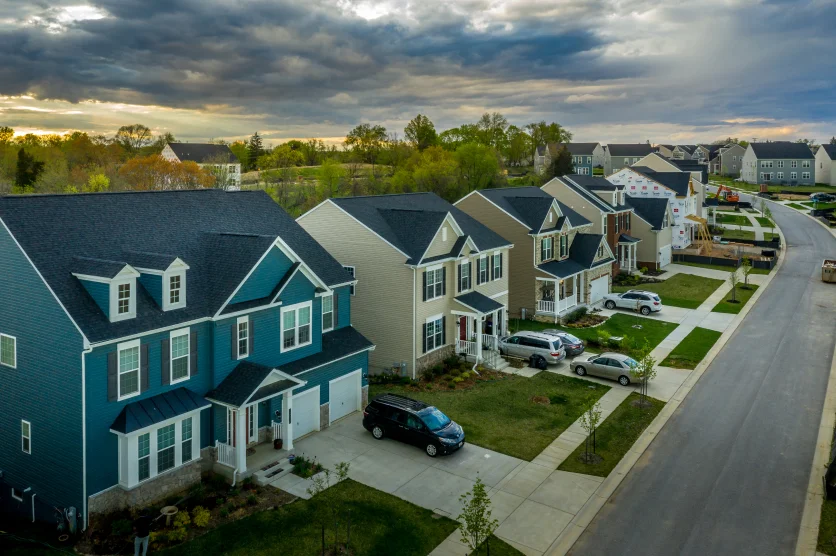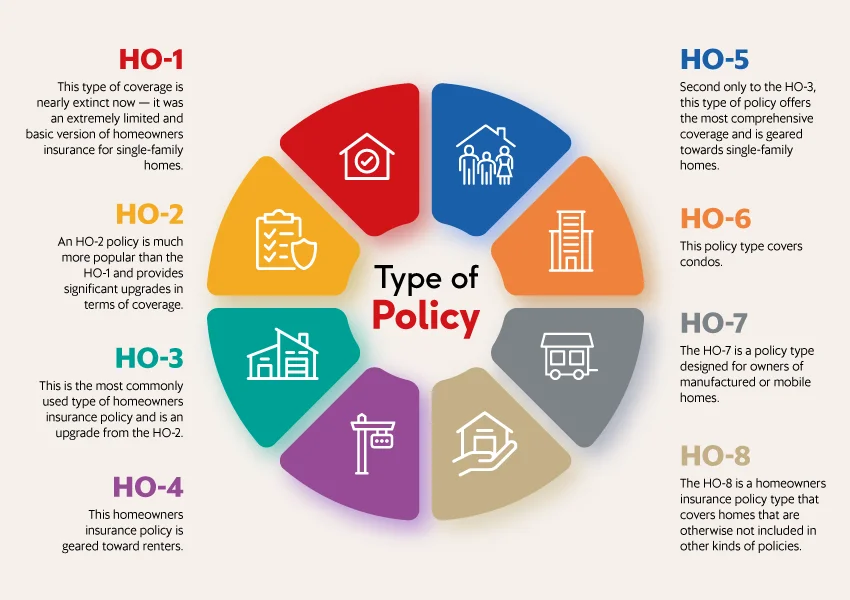
Maryland Homeowners Insurance Quotes
Everything You Need to Know about Home Insurance in Maryland
If you love history, crab cakes, beautiful scenic views and snow in the winter, Maryland may be a good choice for your new home. Those who already live here understand the charm of being able to visit the Atlantic Ocean seaside for some delicious, fresh seafood and drive a few hours away to hike in the rugged Appalachian Mountains.
Maryland is not a large state, coming in at number 42 in the list of 50, and a large part of its population resides in Montgomery County, known as MoCo. Here you’ll find the municipalities of Rockville, Silver Spring, Gaithersburg, Bethesda, Germantown and Potomac – and lots of commuters to Washington D.C. Baltimore is the only real “big” city in Maryland, but it has many cultural offerings for residents and visitors.
There’s plenty to do in and around the Old Line State, a nickname attributed to General George Washington in the Revolutionary War. Fort McHenry is a historical landmark at Chesapeake Bay where 1,000 American defenders kept a flotilla of British naval forces at bay in 1814, saving Baltimore. It’s the inspiration for Francis Scott Key’s “The Defense of Fort McHenry” which later became “The Star-Spangled Banner.”
Other places to put on your list include the Baltimore Museum of Art, Market Street in Frederick and Harper’s Ferry, a sacred place with an ever-evolving history that stretches back millennia.
Even though Maryland has an eastern seaboard, hurricanes do not typically impact the state directly. However, the after-effects of flooding can be a problem, and tornadoes visit on average 3 times per year. Winter blizzards do make the occasional appearance, so snow, ice and high winds can impact your home. Thunderstorms, with lightning, heavy rain and wind, happen frequently during the summer months.
Homeowners in the Old Line State should purchase top-rated home insurance from a well-known company to keep their investment protected. At InsureOne, we can help you find that coverage at a price you’ll love.
How Much Does Homeowners Insurance Cost in Maryland?
Homeowners in Maryland pay an average of $1,545 per year for $300,000 worth of dwelling coverage, slightly lower than the national average of $1,820. Most damage here comes from winter storms and coastal weather.
Dwelling coverage is the amount your insurer agrees to pay to rebuild the physical structure of your home in a covered event.
Regardless of whether you live on the Atlantic Ocean side or not, there are steps you can take to lower your premium.
How Do Home Insurance Deductibles Affect Rates in the Old Line State?
The higher your deductible the lower your premium – that’s how it works, at least in theory. Most insurers will charge you less if you are willing to assume a greater financial share in the event of an approved claim. Your deductible is the amount you promise to pay under those circumstances.
Overall, that is the relation to deductibles and premiums, however, in some cases, especially for those living near coastal areas where risk is greater, an insurer may make the higher deductible (or a percentage deductible) mandatory. Luckily, this is not often the case with Maryland residents.
For Marylanders, the more financial burden assumed, the lower the annual premium. It’s always best to choose the highest deductible you can afford since it will lower your overall policy cost.
Compare Home Insurance Rates by Coverage Levels in Maryland
The following table shows the average annual premiums in Maryland for different levels of dwelling coverage.
| Dwelling Coverage (Maryland) | Average Annual Insurance Cost |
|---|---|
| $100,000 | $818 |
| $200,000 | $1,182 |
| $300,000 | $1,539 |
| $400,000 | $1,917 |
| $500,000 | $2,358 |
InsureOne can help you find a flexible plan to meet your specific needs at a price you can handle.

Is Home Insurance Tax Deductible in MD?
Home insurance is not tax deductible in Maryland or any other state. Related to your home, there are some things that can be deducted, such as property taxes, mortgage interest and other expenses, such as setting up a dedicated home office or installing medically-necessary home improvements.
However, it’s a good idea to get professional advice on tax questions.
Does Maryland Have the 80% Homeowners Insurance Rule?
The 80% rule is generally found in the home insurance policy contract. This language stipulates if you carry less dwelling coverage than 80% of your home’s replacement cost value (RCV), your insurer will not be required to pay out the full amount of your claim.
Sounds scary, right? Maryland homeowners can avoid this situation by insuring their home properly and purchasing at least 80% of their home’s RCV.
Let’s look at that a little closer. Your homes RCV is the amount it should take to rebuild from the ground up in a total loss. Your dwelling coverage is the number on your policy.
If your home’s RCV is $325,000, your dwelling coverage needs to be at least $260,000 – 80% of that value. But how do you figure out your home’s RCV? You can do an online search to find out the going rate for materials and labor in your area to get a good idea. Just search for a term such as “How much does it cost to build a home near me”.
This will give you at least a starting point of how much it costs per square foot in your area to build a new home. Multiple your square footage by that number and you’ll come up with a starting place. Keep in mind that your home’s unique features, such as location and building materials, are specific.
Alternatively, when you purchase home insurance, your insurer will plug all the little details about your unique home into a formula to arrive at an RCV. In most cases, these are accurate amounts.
Keep in mind if you make improvements to your property, your RCV may increase. Inflation also plays a part. It’s important to check in with your agent on a regular basis to ensure you have the proper amount of coverage.
Bundling Home and Auto Insurance in the Old Line State
Marylanders know the value of a dollar and while most homeowners here want the best home insurance possible, nobody is averse to saving money on a good discount. When you bundle your home insurance with the best car insurance in Maryland, you can save up to 25% on your premium. This is probably the largest single discount available from an insurance carrier.
Showing loyalty to an insurer with multi-policy actions usually results in rewards to policyholders. It doesn’t have to stop with home and auto, either. By using one insurer for all your needs, it’s easier to pay premiums and manage your policies when they are all under the same roof.

How Does Home Composition Impact Insurance Rates?
The materials your home is made of can affect your rates. Traditional stick homes (built with wood) are seen as higher risks to insurers, while stone, brick and rock are able to withstand wind and fire more easily.
Colonial revival homes are popular in Maryland. These two- and three-story homes are mostly constructed of wood and may be historical in age, dating back to the 1700s. In later years, contemporary homes with large windows and open floor plans have dominated the landscape.
Near the coast, you’ll find Cape Cods and bungalows, with some A-frames sprinkled in for good measure. Here are some common home composition materials and how they stack up with insurers:
- Lumber: Even if your home is fronted with a more durable material, the frame is most likely constructed with lumber. Using lumber for the frame is acceptable, however, when it is used for the exterior and other vulnerable areas, it is prone to damage from fire, flooding and wind.
- Concrete: You already know that concrete is used for most foundations and slabs, but you can also use it for exterior and interior walls, stairs and more. Concrete is extremely durable and is a popular choice in hurricane-battered places such as Florida.
- Steel: Steel is fire and pest resistant, which makes it popular for use in beams, stairs and railings, and for reinforcing concrete.
- Stone: Popular for its durability and aesthetics, stone is used for foundations, exterior walls, flooring, fireplaces and more. It is fire resistant, which makes it pleasing to the insurer.
- Brick: Brick is versatile, available in many shapes, sizes and colors and withstands fire and harsh weather conditions. These are some of the reasons brick is a popular choice and acceptable to insurers.
What are the Different Types of Home Insurance?
Whether you have an A-frame in Annapolis, a ranch in Rockville or a bungalow in Bethesda, there’s a home insurance policy for you. Even though there are 8 basic policy types, there are many more home types. Most people start with the homeowner insurance type that best suites them and then continues to customize the plan until it fits perfectly.
It’s vital to start with the right type of home insurance. You can trust the team at InsureOne to help you find a flexible policy from a top-rated carrier that meets your individual needs.
What is the Most Common Homeowners Insurance in MD?
In Maryland, those with a historic Colonial Revival may start with the HO-8 policy, since it is designed to cover homes with historic and unique features, such as custom steel work, stained glass and original floors. For those who own a more current and contemporary style, the HO-3 policy is the best starting place. An HO-7 policy is for people who have a manufactured or mobile home.
By understanding the coverage you need, you can ensure your home is adequately protected with the right insurance policy.

Get the Best Homeowners Insurance in Maryland Today
Maryland residents love their crab dishes and the Baltimore Ravens. They are fiercely proud of their state and appreciate saving money. Agents are InsureOne can help homeowners here find the best insurance with flexible options and plans. You can trust us to listen to your needs and fine several options so you can choose the one you like.
Give InsureOne a call at (800) 836-2240 or check their online site today. Or, if you are nearby, take a moment to stop in for a one-on-one visit.



